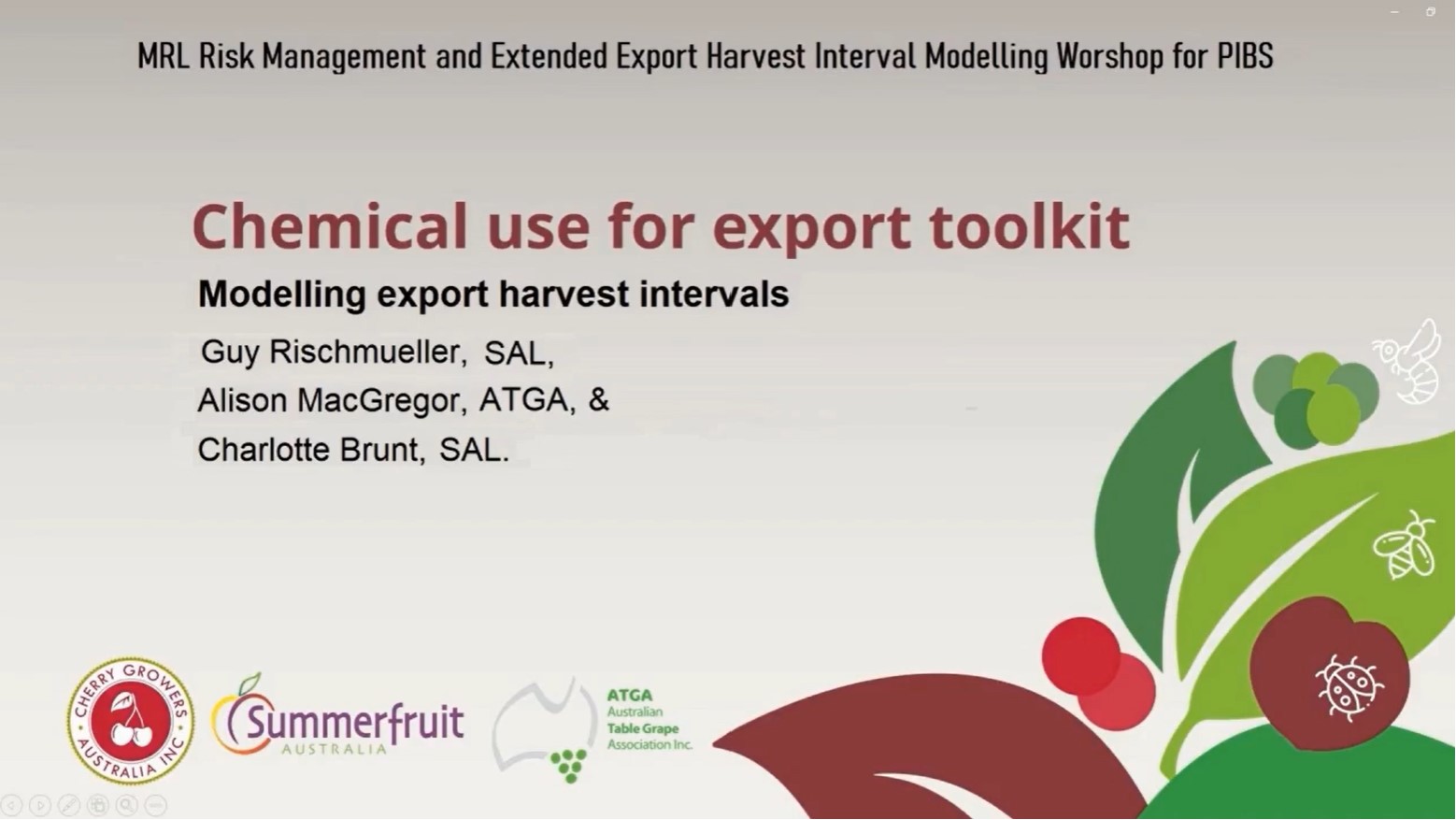In overseas export markets the Maximum Residue Limits (MRLs) for horticultural produce often differ from Australian MRLs set by the Australian Pesticides and Veterinary Medicines Authority (APVMA) and the Food Standards Australia New Zealand (FSANZ) Food Standards Code.

Where an export market’s MRL for a chemical is lower than that set by Australia, a grower has two options:
1. Do not use the chemical on produce destined for export to that market, or
2. Extend the withholding period for that produce until residues of the chemical comply with the lower MRL of that market.
To date, many growers have chosen the first option due to a lack of knowledge on how to manage withholding periods to meet lower MRL requirements. An industry-led project entitled “Chemical Use for Export Toolkit” was developed and funded by Agriculture Victoria to inform growers how to comply with lower MRLs in export markets by extending withholding periods shown on chemical labels. These extended withholding periods are abbreviated as XWHPs.
The OECD MRL calculator was used to model residue decay for a range of chemicals commonly used in the industry and where the MRL is less than the Australian MRL. Where a decay graph indicates that residue levels decreased over time, an XWHP can be established.
In this project, the table grape, cherry and summerfruit industries collaborated to develop tools to assist growers to meet export MRLs. This included the development of Apps to help growers determine:
- the current MRLs for each country that their produce is exported to
- the WHP associated with each registered chemical
- the XWHP (where applicable) that will help growers comply with overseas MRLs.
Additionally, information on the toxicity of a range of agricultural chemicals on beneficial insects was collated to assist with managing Integrated Pest and Disease Management (IPDM) programs.
These tools will assist the horticulture industry to maintain existing export markets and build export flexibility to ensure compliance with MRLs for multiple markets. Reducing the risk of MRL violations will benefit all Australian horticulture producers by maintaining our international reputation for safe and premium products.
All links below will download documents as PDFs in new windows (Note: these documents do not meet WCAG 2.0 accessibility guidelines)
Tools developed through the “Chemical Use for Export Toolkit” project include:
- Videos and presentations from the MRL/Export Harvest Interval (EHI) workshop held in May 2023.
Video presentation: Introduction to EHI Modelling (24 min)
- An excel guide to using the OECD MRL calculator for predicting XWHPs for Australian horticultural crops.
Modelling residue decay to extend withholding periods to meet export market MRLs
- A3 posters (PDFs) on beneficial insects and the toxicity of pesticides commonly used on grapes, cherries and summerfruit. These posters summarise the potential impacts of selected chemicals on a range of beneficial insects.
- A more comprehensive document that shows the information sources and includes a wider range of chemicals (Note: inclusion in this document does not imply a chemical is registered for use on table grapes, cherries or summerfruit).
Entire document: Beneficial insects and the toxicity of chemicals
- An IPDM compatible plant list for shelterbelts in horticulture utilising plants indigenous to the Yarra Ranges region but also extending into other regions of Victoria.
Encouraging beneficial insects through planting indigenous shelterbelts
A list of plants compatible with integrated pest and disease management programs for horticulture in Victoria
- Apps that inform growers and agronomists of export MRLs in targeted markets, WHP for registered chemicals, and XWHPs (where applicable) to comply with lower MRLs.
ATGA MRL app (available on Google Play and Apple App stores)
Acknowledgement

This project was funded through Agriculture Victoria's Food to Market program.

DISCLAIMER: Use of any of the information developed by this project or contained in this website is at your own risk and the Consortium (Cherry Growers of Australia, Summerfruit Australia Limited and Australian Table Grape Association) and/or Agriculture Victoria and/or any data providers associated with the project will not be liable to you for any loss, damage, claim, expense, cost (including legal costs), or other liability arising in any way out of or in connection with your reliance on or use of the information herein and hereby disclaims any and all liability to the maximum extent permitted by law.
